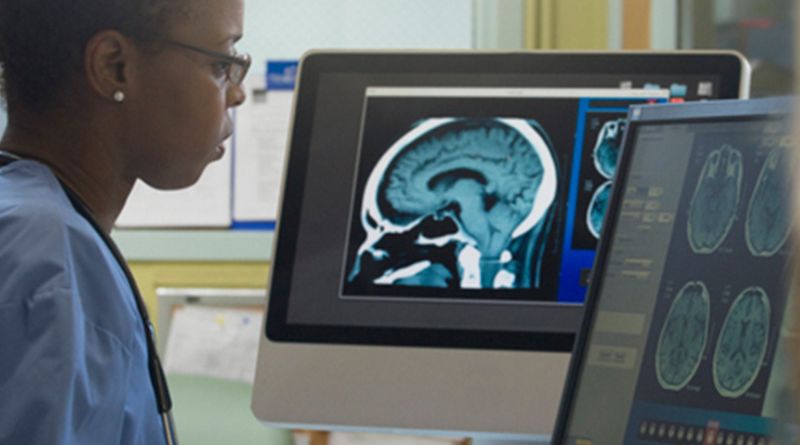PACS Medical Imaging- What is it & How it Functions with RIS?
The PACS medical imaging is an invaluable tool that lets healthcare practitioners share diagnostic images electronically swiftly. Innovation and technology are integral to the success of the healthcare sector. Technological platforms have enhanced the overall quality of medical care offered to patients.
The PACS system in medical care facilities is one such example of technological development improving healthcare. With PACS, healthcare facilities don’t have to store, file, retrieve, and send sensitive information in paper-based formats.
Instead, medical documentation and diagnostic images can be safely stored on off-site servers. These off-site PACS servers can be accessed by healthcare practitioners worldwide with PACS software. PACS can be defined as a medical imaging storage technology platform. With data analytics of medical images becoming more critical, PACS is gaining prominence.
Overview of PACS Medical Imaging
PACS is a medical imaging technology that offers economical storage, distribution, and management of medical images. The transmission of electronic images and reports of the patients occurs digitally via the PACS platform.
Therefore, there’s no need for the clinics and hospitals to manually file and distribute the film jackets of the diagnostic images. Nowadays, PACS is also playing a crucial role in streamlining the productivity of radiology departments of healthcare facilities.
A radiology PACS is often integrated with RIS (Radiology Information System). The primary function of the RIS is to record the history of the patient and schedule appointments. PACS mainly focuses on storing images and their retrieval.
Digitalization is necessary for the overall well-being of patients and other stakeholders in the healthcare sector. And with PACS, hospitals are becoming digital with no need to work with physical files.
The Integral Components of PACS Medical Imaging you should Know
The Picture Archiving and Communication System is an automated means of replacing the role of traditional radiological films. Most radiology professionals use the PACS to store various types of diagnostic imaging files.
Any number of healthcare teams can quickly search and retrieve the images for faster treatment of patients. To understand PACS, you need to comprehend its integral components. The integral components of PACS are as follows:
- Imaging Modalities
It refers to the primary image platform that is responsible for producing medical images.
- Storage Achieves
It is a secure storage area where people, with permission, can view the diagnostic images.
- Workstation
The workstation lets the doctors and radiologists study and view the image.
- Secure Network
To guard the privacy of patients, PACS comes with a secure network protocol. The secure network protocols ensure that healthcare specialists can safely upload the images.
Working Mechanism of PACS Medical Imaging with RIS
RIS, PACS, and HIS differ from each other. PACS stores and transmits the medical images of patients correctly. RIS refers to an electronic health record platform for radiology departments. It allows practitioners to store and analyze patients’ data.
A Hospital Informatics System, or HIS, is an extensive informatics system. It manages various aspects of a healthcare clinic. The benefits of interlinking these virtual platforms are clear. These platforms, when interrelated, offer richer patient information.
By integrating PACS medical imaging with RIS and HIS, doctors can rely on a centralized platform to sync data and images. Often PACS is integrated with RIS and HIS to ensure that the system is consistent. Doctors and other practitioners will have access to essential patient data in a centralized platform.
The Benefits of PACS- Things to Know
One of the key highlights of PACS is that it improves efficiency in the workflow associated with data. And due to the decreasing price of digital storage, PACS offers a space advantage to modern-day clinics. Here are some of the expected benefits of implementing PACS in healthcare institutions.
- The data of the patients are stored and organized orderly. There is no need for physicians to deal with bulky paper-based and film-based files.
- PACS eliminates the need to print films. It is a cloud-based system that makes it easy for doctors to analyze images.
- It facilitates the better visualization of images. PACS lets you manipulate the images electronically for visual enlargement.
- The patients can now receive accurate diagnoses, thanks to the high-quality images developed and stored by PACS.
Efficient Management of Data in Hospitals and Clinics
One of the primary benefits of using a mini-PACS platform is digital imaging technology. Medical technologists and doctors can take a closer look at the images and study them. The system offers a practical and seamless review of radiology cases.
And with a centralized and accessible system, the PACS platform makes it easier for hospitals to facilitate quality care. Data management becomes more efficient as PACS eliminates the overall number of duplicate scan reports and images. Furthermore, PACS also allows doctors and technologists to access previous data. All these aspects make PACS a revolutionary digital tool for modern-day hospitals.
Making Remote Reporting Possible
PACS enables easy and instant access to reports and images. Irrespective of the location of the tests, reporting can be conducted remotely. Moreover, the results can be shared anywhere, even if the hospital or clinic is in a remote place.
Hospitals having branches worldwide will benefit by deploying a cloud-based PACS platform. Medical practitioners at different locations can access the information for teleradiology. Comparison and analysis with previous studies are possible with PACS.
Who can Use PACS?
Radiologists have predominantly used PACS. However, nowadays, it is common to witness the integration of PACS in several departments. For instance, PACS is increasingly implemented in nuclear medicine, cardiology, oncology, and dermatology departments. PACS is allowing healthcare practitioners to access the most updated version of a patient’s medical records and images.
While upgrading to a new PACS medical imaging, you should look for features like user-friendliness and scalability. A cloud-based PACS is an excellent advantage to any healthcare facility as it offers evidence-based insights. Try to invest in a PACS platform that uses the DICOM protocol. Witness the smooth collaboration between doctors of your hospitals by deploying PACS.

